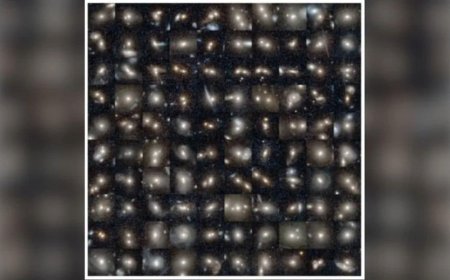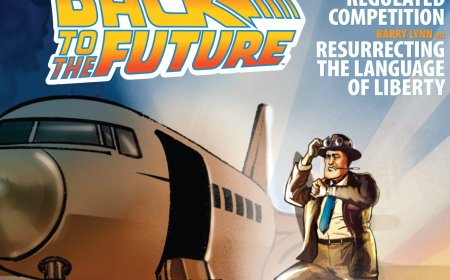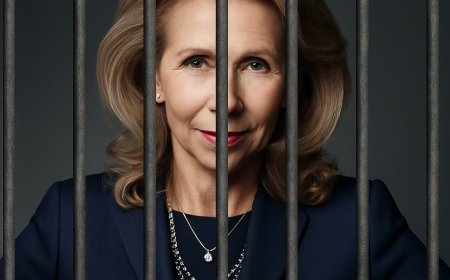SJD8 #9: Activism and Housing In/Justice in Dublin 8

This is the ninth in a series of blogs on 'Spatial Justice in Dublin 8' (SJD8 #9), as a contribution to Maynooth University Social Justice Week 2022.
Introduction
Kitchin and Hubbard (1999: 5) discuss how different approaches in human geography are committed to exposing ‘the socio-spatial processes that (re)-produce inequalities between people and places; challenge and change those inequalities; and bridge the divide between theorization and praxis’. The Irish economy is widely regarded as a spectacular success story, but inequality exists in many aspects of our society. The policies of successive governments have failed to address this disparity and have often contributed to widening it. This blog focuses on how this inequality has manifested itself in terms of spatial injustice in the St. Michael’s Estate in Inchicore. It will also look at how community activists have focused attention on the underlying issues and called for housing justice in the city.
Inequality in Ireland is often reflected in a lack of spatial justice more broadly, defined by geographer Edward Soja (2009) as both process and outcome of the distribution of valued resources and social goods (see also Kearns SJD8 #2 ‘Historical Geographies of Injustice in Dublin 8’). In their edited volume ‘Spatial Justice and the Irish Crisis’, Kearns, Meredith and Morrissey (2014) identified significant differences in the social, economic and geographic outcomes of well-being for different groups in Irish society. Kitchin, Hearne, and O’Callaghan (2014), in their chapter ‘Spatial Justice and Housing in Ireland’, highlighted three concerns with respect to housing justice following the 2008-09 global financial crisis in Ireland. Firstly, the lack of access to social housing given the collapse in regeneration initiatives. Secondly, the issue of ‘ghost estates’ and poor quality private housing stock. Finally, mortgage arrears and negative equity. They concluded that these forms of housing injustice were likely to be maintained, given that the structural forces of austerity tend to widen already existing social and spatial inequalities.
Activists, as well as scholars, have called attention to problems of housing injustice. Indeed, the work of activist geographers, with community leaders, focus on action, reflection, and empowerment to challenge oppressive power relations (Ward, 2007). As part of the postgraduate module ‘GY607: Field School’ taught by Professors Karen Till and Gerry Kearns last semester, we were introduced to activists in Dublin 8 who taught us about their commitment to such activist goals, including housing justice, in their community. Dublin 8 has a strong tradition of local community activists, and this blog draws upon their guest lectures and their work in the context of demanding healthy and affordable places to live at St. Michael’s Estate. Rita Fagan is a community activist and worker, and the Project Director at the Family Resource Centre at St. Michael’s Estate (FRC). The FRC provides a compassionate and confidential listening environment for people of all ages and backgrounds. John Bissett has also worked in community development for over 30 years, and is, like Rita, a member of the St. Michael’s Estate Community Regeneration Team. John represented the community in the design of the failed Public Private Partnership (PPP) for the St. Michael’s Estate site and documented his experience in his book Regeneration: Public Good or Private Profit? (2008). Finally, Joe Lee is an independent filmmaker and videographer. His work focuses on urban Irish culture, social justice issues such as housing and drug abuse, and visual arts, social geography, and contemporary dance. His most recent feature-length film, entitled Barrack Square Estate – Whatever Happened to St Michael’s Estate? (2017), tells the story of how life has evolved for people living in Inchicore area, from Richmond Barracks to Keogh Square to St. Michael’s Estate, over a 200 year period from the perspective of local historians and residents.
A Promising Start
In 1969 the Keogh Square tenement buildings were replaced by St. Michael’s Estate (SME) with the construction of 350 flats. The development consisted of four eight-storey towers and six four-storey blocks set amidst open space (see Figures 1 and 2).


Figure 1 (left): St. Michael’s Estate Complex (in the 1970s). Source: St. Michael’s Estate Regeneration Board Facebook Page (23 June 2015). Figure 2 (right): Detail of Tower Blocks in St. Michael’s Estate. Source: Dublin City Council, reproduced in DublinLive.ie (20 July 2018).
There was a strong demand from people for the new flats, with attractions including the size of the rooms, central heating, open green spaces, and children’s playgrounds (see Figure 3). One of the contributors to Joe Lee’s film commented that ‘…it was like gold dust to get a spot in here’ (Lee, Barrack Square Estate, 2017: 8min:01sec).

Despite the positive reaction to the new flats, some critics maintained that local authorities had a poor track record of providing adequate housing services, including infrastructure and maintenance. In her study, ‘Housing, Architecture and the Edge Condition: Dublin is building 1935–1975’, architectural historian Ellen Rowley (2018) suggested that ‘in Ireland, by and large, the struggle has not been to create neighbourhoods, but merely to build homes. This is roughly parallel to producing automobiles without building hard surface roads’ (cited in Fallon, 2019, np).
A Neglected Community
In his film Barrack Square Estate (2017), Joe Lee allows the residents who have lived and grew up in this part of the city to be the key storytellers of their experiences at SME. This technique brings the story to life and creates a sense of authenticity. It is clear that the residents have strong affection for the area, evidenced by the way they describe how the community supported people who were less fortunate and describing St. Michael’s Estate as a ‘great place to grow up (Barrack Square Estate, Lee, 2017: 52min:7sec).
Unfortunately, during the 1970s and 1980s, living conditions on the estate declined dramatically for various reasons. The initial enthusiasm and optimism of the new residents was replaced by frustration and despair. In Lee’s film, former residents described the cramped living conditions for large families, the insufficient social facilities in the original design, and how the estate fell into disrepair. They acknowledged that some responsibility needs to be borne by ‘a small portion of bad apples’ (ibid: 52min:13sec), but it is clear that they feel the estate was neglected by the authorities.
The institutional neglect of the St. Michael’s Estate is consistent with research conducted by Karen E. Till (2012). She defines ‘wounded cities’ as ‘densely settled locales that have been harmed and structured by particular histories of physical destruction, displacement, and individual and social trauma resulting from state-perpetrated violence’ (Till, 2012: 6). We can consider the state’s neglect of this historic community as a form of intergenerational violence (ibid), as evidenced by the deterioration of the built and social environment of the area, and how people were socially and spatially marginalised over decades. Individual and social trauma resulting from social discrimination, the lack of job and economic opportunities, little access to green and public healthy environments, and other forms of oppression, in turn may have led to cycles of drug addiction and gender-based violence (see Brophy, SJD11 # ‘Geographies of Violence Against Women and Creating Safe Spaces in Inchicore’).
Two symbolic moments from the first minutes of Joe Lee’s film relate to the resilience of the SME community despite these conditions, but also to how the physical destruction of the tower blocks, which included the displacement of residents and unfulfilled state promises, continue to wound this place. At the start of the film, we see the community arts project ‘The Laughing Wall’, created on St. Michaels Estate. The project, made in collaboration with Joe Lee, was installed by the Family Resource Centre, led by Rita Fagan in 2002, and included the faces of residents showing them all in high spirits with ordinary lives that included laughter, humour and hope (Figure 4). Opening the film in this way highlighted that the area should not just be seen as a place of crime and drug use, but that there are ‘real people’ living there who have a strong sense of community.

The film then cuts to a shot of an abandoned television on the street which shows an edited series of news clips from the 1970s to the early 2000s, with a voice-over from ‘FM104 News’ describing how the demolition of SME will begin in 2002 and Dublin Corporation ‘won’t make the same mistakes again’, promising a mix of housing to be built for 1000 or more people within six years, including senior residences and Traveller accommodation, which will be built through a Private-Public-Partnership (ibid: 0min:41sec to 1min:23sec). The film cuts back to original scene, which we now recognise as the demolition of the ‘The Laughing Wall’ and the final standing tower blocks of SME (Figure 5). As the jaws of the crane tears at the fabric and concrete blocks, a voice-over describes the new regeneration plan announced in September, 2008, after the collapse of Irish banks. Construction workers tug down on parts of ‘The Laughing Wall’ that remaining clinging, as another news voice-over describes a new regeneration project proposed by Dublin City Council; SME residents ‘admit it will be a battle to get the next phase completed’ (1min:43sec to 2min:33sec). This was a poignant moment symbolising the physical break-up of the community and the dismantling of the social relationships that were so important to many people’s lives, but also suggests that the community is committed in a battle to get affordable public housing in the area.

A Persistent Pattern of Spatial Injustice
As suggested above, following the building of SME flats, there was no continued state support for the high-rise, high-density community, which meant that residents were subject to a persistent pattern of discrimination relating to the now deteriorating built environment in which they lived. This spatial and environmental injustice had a variety of forms. First, the urban design of SME was flawed. There were inadequate or no social facilities in the original design, despite housing up to 2,000 people in close proximity who would need such supports. Basic facilities needed to support healthy communities and the daily lives of residents, such as a community centre, creche, health services, designating safe after-school spaces for young people, among others, were not provided. Second, Dublin Corporation/Dublin City Council failed to offer basic maintenance services, which was a significant factor in the decline of both common areas and individual flats. For this reason, community activist John Bissett was critical of the role of the Council: ‘…it didn’t value its own stock, it didn’t place any value in it [SME and the community], and it didn’t actively put value into it by maintaining it’ (cited in Barrack Square Estate, Lee, 2017: 58min:40sec; see also Bissett, 2008). Third, there was a clear failure in state support to help tackle an emerging drugs crisis in the area. It was evident from Joe Lee’s film that drugs, including heroin, started to be sold openly in St. Michael’s Estate during the 1980s, with people travelling from outside the area to buy and sell drugs. Although the heroin epidemic was a city-wide problem not restricted to Inchicore, city and local authorities did not work to stop the drug supply chain, protect residents, and offer support for those who became dependent and/or addicted. Instead, residents were forced to take direct action themselves to patrol the streets and confront suspected drug users and dealers.
These problems were further exacerbated by the state’s economic and housing policies at the time. According to Bissett, ‘the State itself adopted policies in the ‘80s which took people with decent wages out of the public housing system……and made it into a sector just for people on low incomes, which is quite in contrast to other European housing models’ (cited in Barrack Square Estate, Lee, 2017: 58min:40sec). Moreover, the introduction of a new ‘First-time Buyers Grant’ led to many working families, who would have previously been pillars of various community organisations, leaving the area and moving to new developments in places such as Ballyfermot and Drimnagh. According to one SME resident, the effects of this economic policy ‘took the heart out of the community’ (ibid: 53min:2sec).
Another change in government policy that impacted St. Michael’s Estate was the decision to move single parents — another discriminated against social group in Ireland — into already existing public housing estates. The combined impact of some well-established families moving out, new single parent families moving in, and the Council’s inadequate vetting of new tenants had a negative influence on the social fabric of the community, which may have also contributed to an increase in anti-social behaviour.
Rejecting Community Plans in Favour of Public-Private Partnerships
In 1986, a tenants’ Action Group was set up to campaign for the refurbishment of the flats. A YouTube video, ‘Community in Crisis’ by the St. Michael’s Estate Action Group (St Michael’s Estate Action Group, nd), depicted ‘the lack of playing space, graffiti, vandalised and burnt out flats, and general deterioration of the area’ (0min:44sec). It highlighted the need for effective maintenance and for green space for children to play, and that community petitions to the Department of Environment for support remained unanswered. For security purposes, the plan suggested that each block would be fenced off to provide separate identity and security. The nine-minute video used eery music and shots of the poor quality of living conditions on the estate, including close-ups of empty or uninhabited rooms and mouldy interiors, as well as mid- to long-range shots of the different tower blocks, with parts boarded up, make-shift metal plates put into ground floors for protection, mossy ventilation systems, and people trying to clean graffitied doorways and halls.
According to Rita Fagan (2021), a community plan was produced following an extensive consultation process with residents. Dublin City Council (DCC) supported the activity by providing an architect to work with the group. The DCC-community negotiated plan was to include 170 social housing units, 70 owner-occupied units, and 80 ‘affordable’ private-sector dwellings (MacLaren, Kelly & Brudell, 2013). However, in 2003, the Department of the Government rejected this plan in favour of a private-public partnership (PPP) option (Bissett, 2008). According to Hearne (2011), PPP residential development projects grew out of the Celtic Tiger government’s neoliberal agenda which supported the privatisation of social housing. In a PPP, a developer was awarded a contract, given ownership of the site and planning permission to develop a large number of private residential units for sale on the open market in exchange for a minimal number of social-housing units and community facilities (MacLaren, Kelly & Brudell, 2013). A central government directive instructed local governments to consider PPP for regeneration schemes of social housing estates valued for more than 20 million Euro, and DCC enthusiastically supported PPP developments (ibid).
Activists protested the new PPP plan and demonstrated to reinstate the regeneration plan the city agreed to with the community (Figure 6). The community actively rejected various plans and demanded to be included in the planning process. Bringing in private developers to the regeneration process meant starting the process from scratch and ignoring the community’s basic needs. As Rita Fagan explained, this resulted in a large degree frustration for the residents: ‘The Council had worked with us very closely and instead of staying on our side, and fighting with us together, they did a U-turn. From then on, they closed the door on us. They said they would draw up a new plan, based on some aspects of the old one. What actually happened was they got the architects to draw up a new plan completely different from our one’ (cited in Indymedia Ireland, 2004). One of the new high-density PPP plans consisted of 850 units, with 550 to be sold privately. Only 220 affordable units were allocated for first time buyers, and a mere 80 units designated for social housing units. According to Fagen: ‘The social housing units were going to be duplexes. The people were not going to get the houses with gardens they were promised. We don’t believe that high densities or apartments are family friendly at all. There’s no community there, you lose your community. It’s a different form of living’ (ibid).

Despite community protests, a PPP deal was awarded to developer Bernard McNamara to build 720 new homes at a cost of €265 million, with only 165 of these homes to be for social housing. The regeneration of SME was one of five PPP’s awarded to McNamara and DCC, but there were unaccounted delays, and progress was ‘slower than anticipated’ according to Dublin authorities (Cullen, 2008). This deal became a casualty of the 2008 property crash, when the fall in property prices meant that the sale of private housing would no longer provide the required profit to finance the construction of the social housing element of the plan.
Hope for the Future?
Since the collapse of the PPP in 2008, there have been many press releases about new versions of regeneration plans, but little progress on the ground. New developments have been restricted to some smaller scale schemes for some former SME residents, including the building of housing units at Emmet Crescent, Bulfin Court and Thornton Heights. In addition, some new facilities have been built, such as health and childcare services, and some tourist attractions, in the form of the Richmond Barracks Visitor Centre, funded as part of the 2016Decade of Centenary government heritage projects.
Lessons have been learned from the stop-start nature of the regeneration process and the high quality of the new Thornton Heights development now provides a quality benchmark for the ambitious future plans for the future St. Michael’s site (Figure 7). The complex consists of buildings ranging in height from two to six stories. The 75 homes include houses and apartments in a range of sizes and layouts. This was the first major social housing development to be constructed to newly introduced housing standards, including: higher ceilings, larger, brighter rooms, better storage both inside and outside each home, higher insulation and energy-saving elements, including the use of photovoltaics and solar panels (Dublin City Architects Blog, 2014). The homes are arranged around a central courtyard, which has been landscaped to provide communal space and play areas. In addition, the complex also includes a new crèche which will also provide after-school activities for local children. An on-site property management office is also provided with 24-hour concierge to deal with out-of-hours issues. Unfortunately, due to the long delays in the process, only a small number of the former St Michael’s Estate community moved into the new complex. Most of the former inhabitants had moved elsewhere.

The full scale planned regeneration of the St. Michael’s Estate site has yet to be achieved, however social activists such as Rita Fagan and John Bissett can be justifiably proud of the contribution they made, including the construction of Thornton Heights as one of the initial steps on that journey. Bissett, who was part of the group that represented the interests of residents in the design process and continues to have active role in the process, gave our class a walk around the area targeted for new development (Bissett, 2021). He noted that the community’s demand to keep control of the land has allowed them to remain in conversations with the city about the future development of the area, but noted the pressures of recent gentrification in Dublin 8. Certainly there will be more lessons to learn from Dublin 8 activists about spatial and housing justice in the city in years to come.
— Cathal Duff
Cathal Duff is a Postgraduate Diploma student in the Department of Geography at Maynooth University. This blog developed from an essay written for a postgraduate Geography module, ‘GY607: Field School’, taught by Professors Till and Kearns, Semester 1, 2021.
Acknowledgements
Thanks to Professor Karen Till for her helpful comments to an earlier version of the essay, and her edits and additional new research and writing to this blog. We are grateful that she took time off from her sabbatical to organise and edit this blog series.
References
Archiseek (2021) 1969 – St. Michael’s Estate, Inchicore, Dublin [online]. Available at: https://www.archiseek.com/2013/1970-st-michaels-estate-inchicore-dublin/ (Accessed 19 December 2021).
Barrack Square Estate (2017) [Film]. Joe Lee, Director. Ireland. Available at Digital Repository of Ireland: https://repository.dri.ie/catalog/95947h69c (accessed 12 December 2021).
Bissett, J. (2008) Regeneration: Public good or private profit? Dublin: Tasc at New Island.
—–, (2021). Guest field walk and class conversation, with GY607: Field School (Maynooth Geography postgraduate module taught by Professors Karen Till and Gerry Kearns, Semester 1, 2021), 12 November. Dublin: St Michael’s Estate.
Cullen, P. (2008) Council to Meet Developer Over Stalled Projects. The Irish Times [Online] (15 May). Available at: https://www.irishtimes.com/news/council-to-meet-developer-over-stalled-projects-1.924529 (accessed 16 March 2022).
Dublin City Architects Blog (2014) Nearing Completion At Thornton Heights, Inchicore. [Online] 30 April. Available at: http://www.dublincityarchitects.ie/nearing-completion-at-thornton-heights-inchicore/ (accessed 17 December 2021).
Dublin City Council (2017) St. Michael’s Estate Land Initiative / Regeneration Project [Online]. Available at: https://www.dublincity.ie/sites/default/files/2020-10/st-michaels-estate-feasibility-study.pdf (accessed 20 December 2021).
Fagan, Rita (2021). Guest lecture and class conversation. For: GY607: Field School (Maynooth Geography postgraduate module taught by Professors Karen Till and Gerry Kearns, Semester 1, 2021), 12 November. Dublin: St Michael’s Estate.
Fallon, Donal (2019) Keogh Square: From Barracks to Tenement In: Come here to Me! Dublin Life & Culture [Online] 7 October. Available at: https://comeheretome.com/2019/10/07/keogh-square-from-barracks-to-tenement/ (accessed 16 March 2022).
Hearne, R. (2011) Public Private Partnerships in Ireland: Failed Experiment or the Way Forward? Manchester: Manchester University Press.
Indymedia Ireland (2004) Living with State Dereliction in St. Michael’s: Local Community Rejects Privatisation of Their Homes [Online]. Available at: http://indymedia.ie/article/66997 (Accessed 20 December 2021).
Joe Lee (2021) Film Maker | Visual Artist [online]. Available at: http://joelee.ie (Accessed 8 December 2021).
Kearns, G., Meredith, D. and Morrissey, J. eds. (2014) Spatial Justice and the Irish Crisis. Dublin: Royal Irish Academy.
Kelly, O. (2014) St Michael’s Estate in Inchicore Regenerated after 16-year Wait. The Irish Times [Online] 22 August. Available at: https://www.irishtimes.com/news/social-affairs/st-michael-s-estate-in-inchicore-regenerated-after-16-year-wait-1.1904068 (Accessed 18 December 2021).
Kitchin, R., Hearne, R. and O’Callaghan, C. (2014) Spatial Justice and Housing in Ireland In: Kearns, G. et. al. eds. Spatial Justice and the Irish Crisis. Dublin: Royal Irish Academy. 57-77.
Kitchin, R. and Hubbard, P. (1999) Research, Action and ‘Critical’ Geographies. Area 31(3): 195-198.
MacLaren, A., Kelly, S. and Brudell, P. (2013). Dublin’s Neoliberal Agenda and the Social Cost of Entrepreneurial Planning. In Fol, S. et. al. eds. Ségrégation et Justice Spatial. Nanterre: Presses universitaires de Paris Nanterre. 48-97. Republished by Open Edition Books (2021). Available at: https://books.openedition.org/pupo/2124 (accessed 22 March 2022).
St. Michael’s Estate Action Group (nd). Community in Crisis. [Video]. Posted on YouTube on 24 June 2012 by: MsRiposte (2012) as: St. Michael’s Estate Inchicore Derelict Blocks. 1990. Available at: https://www.youtube.com/watch?v=15aEgii7Nz4 (accessed 21 December 2021).
Rowley, E. (2018) Housing, Architecture and the Edge Condition: Dublin is Building, 1935–1975. New York: Routledge.
Soja, E., 2009. The City and Spatial Justice. Justice spatiale/Spatial justice 1(1): 1-5.
Till, K.E., 2012. Wounded Cities: Memory-work and a place-based ethics of care. Political Geography 31(1): 3-14.
Ward, K. (2007) Geography and Public Policy: Activist, Participatory, and Policy Geographies. Progress in human geography 31(5): 695-705.










































